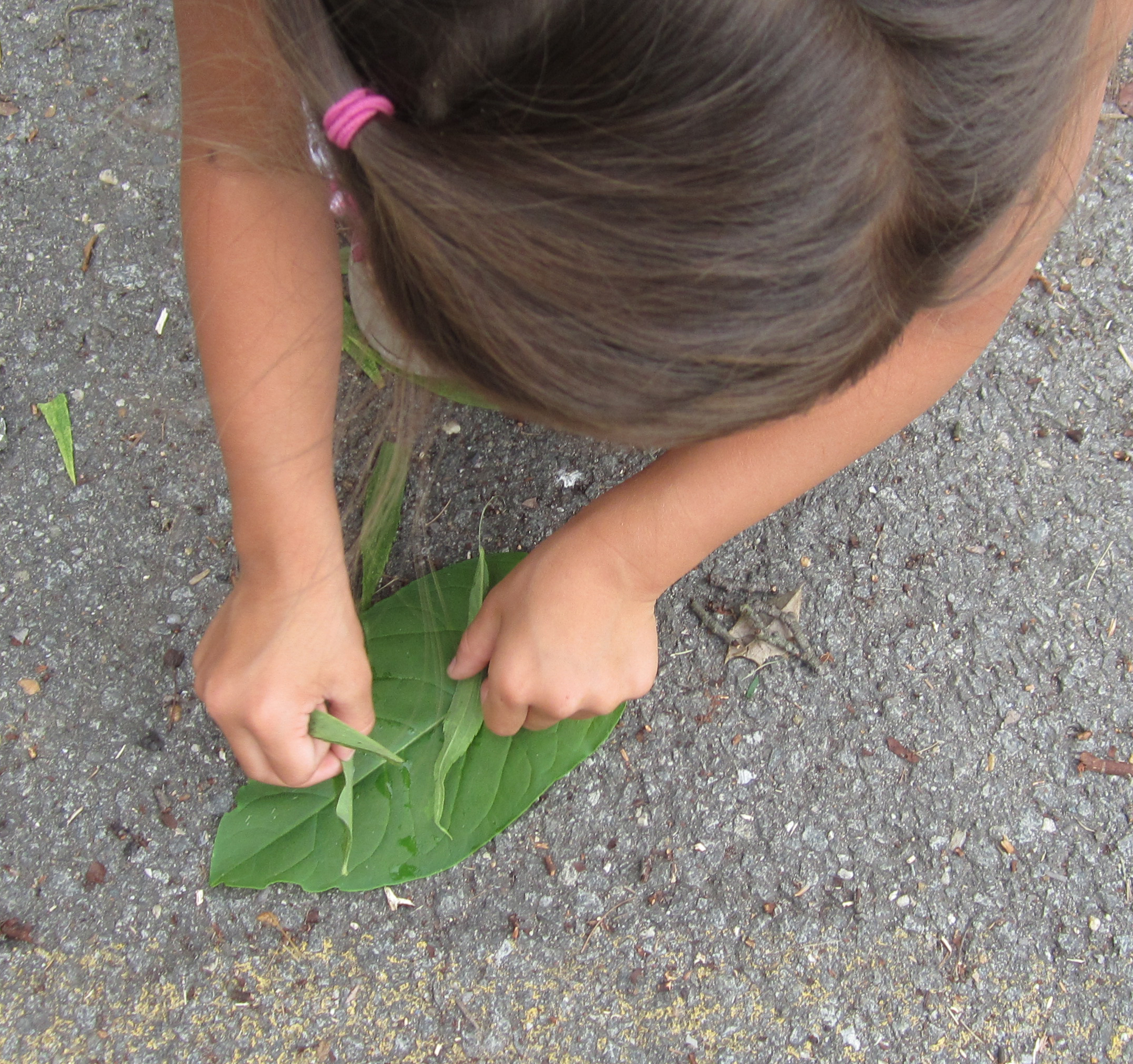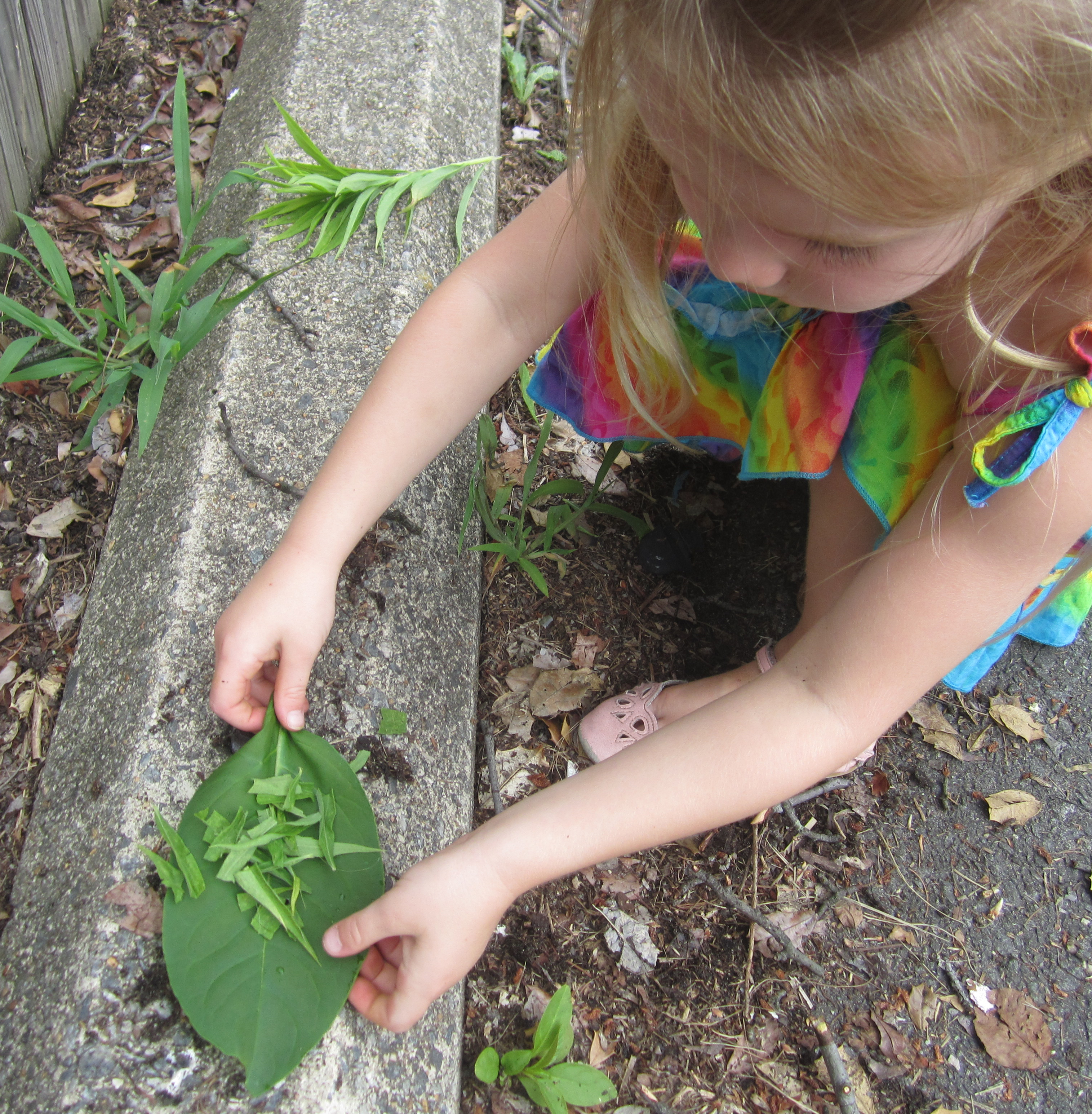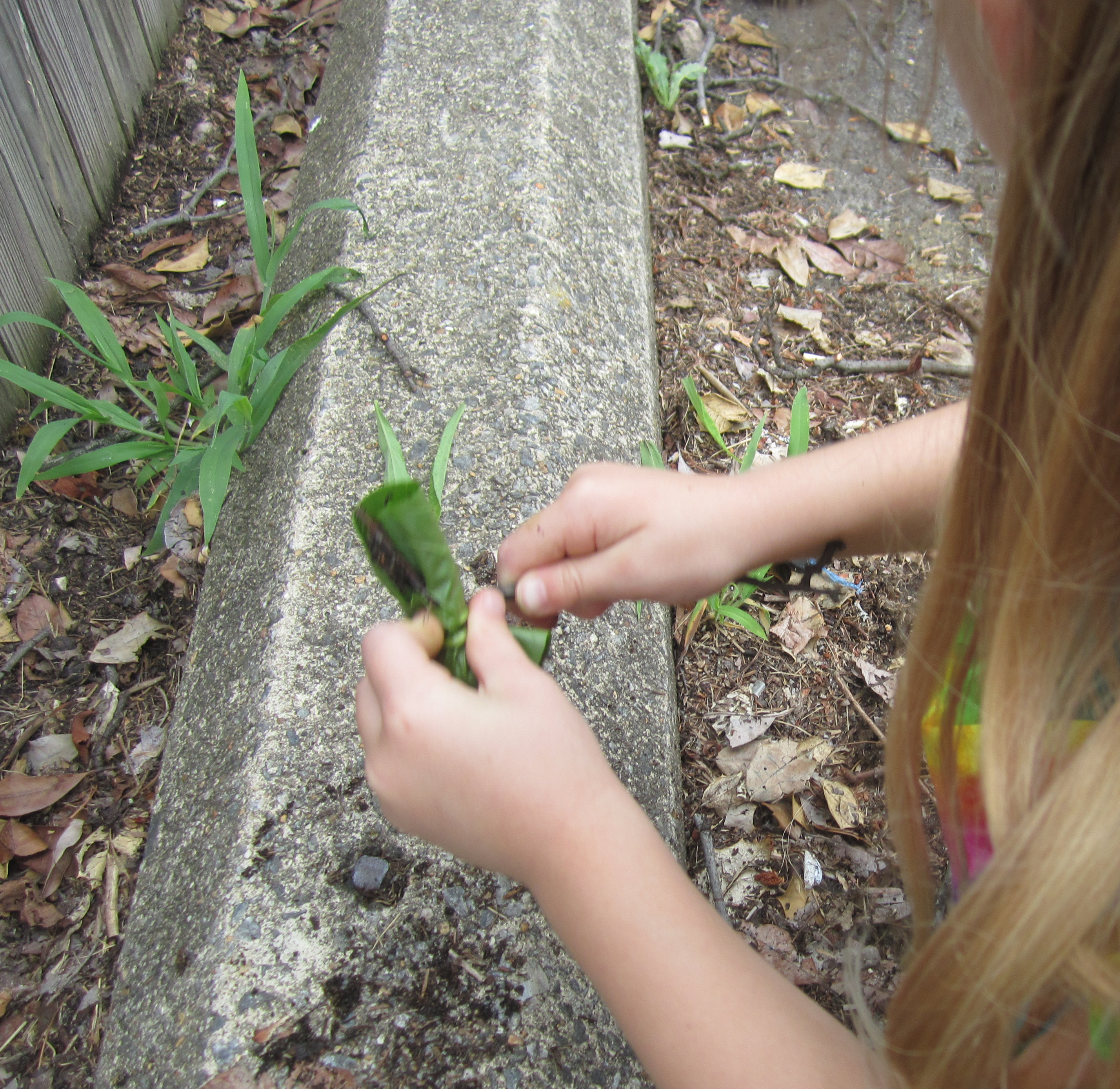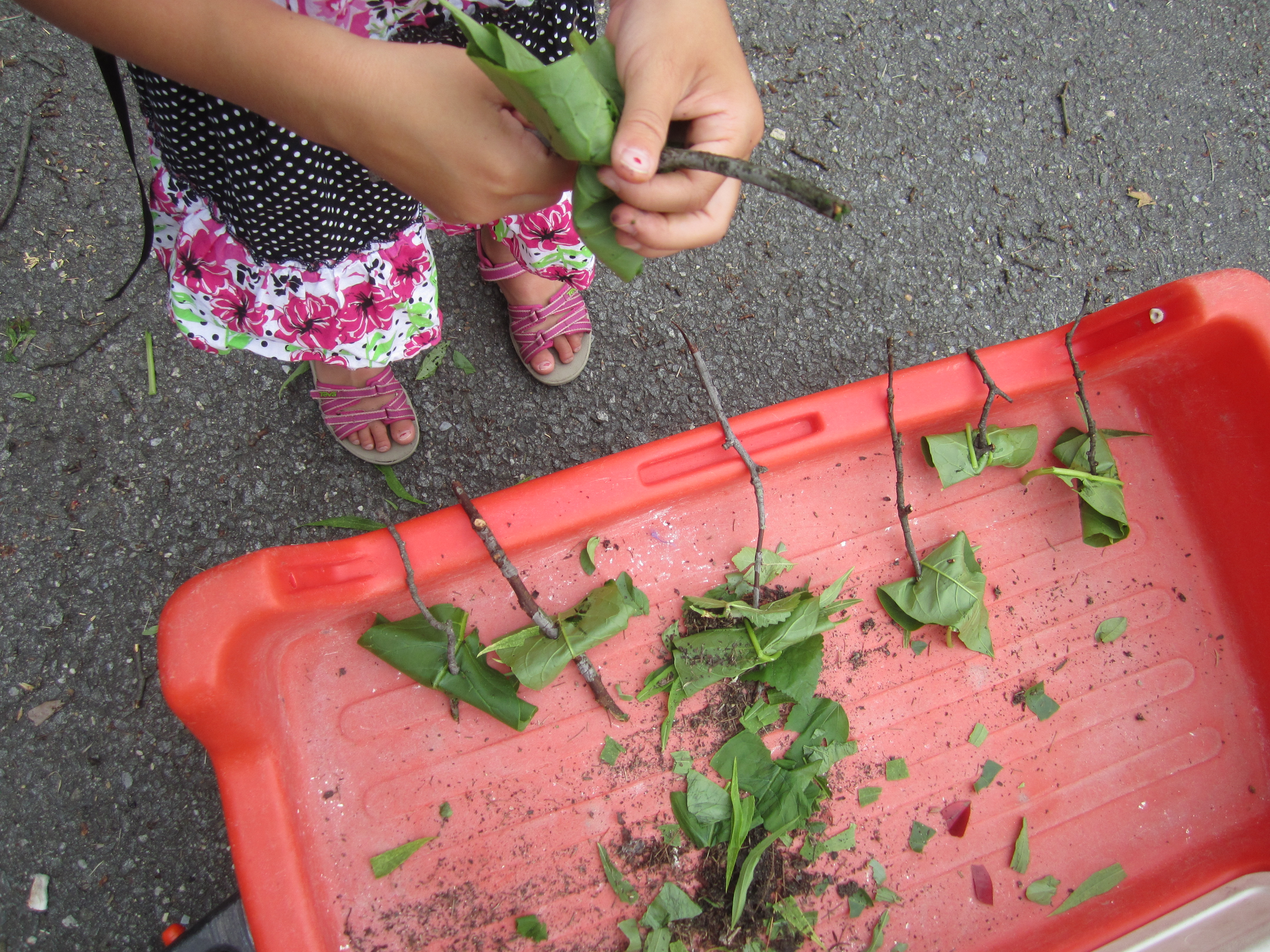Get Your Hands on NSTA Reports
By Carole Hayward
Posted on 2014-06-26

 Just as hands-on experiments are essential to science literacy, you can increase your professional development with hands-on reading of NSTA’s monthly newspaper, NSTA Reports. Each print issue features pages and pages of information, so give your fingertips a rest from texting and tweeting. NSTA Reports is a 30-minute break with the greatest gathered resources for science teachers and administrators.
Just as hands-on experiments are essential to science literacy, you can increase your professional development with hands-on reading of NSTA’s monthly newspaper, NSTA Reports. Each print issue features pages and pages of information, so give your fingertips a rest from texting and tweeting. NSTA Reports is a 30-minute break with the greatest gathered resources for science teachers and administrators.
1. Advance Directly to Grab Bag
The Grab Bag is packed with free resources, upcoming contests, and enrichment programs for you (and occasionally your students). Get links to resources on topics as diverse volcanoes, animal behavior, engineering design using roller coasters, and so much more. Save this center pullout section for future lesson ideas and investigations.
2. Commentary from Colleagues
NSTA Reports features commentaries from science teachers, experts in the field, and even NSTA leadership. First-person experience with implementing NGSS, integrated curriculum objectives, and scaling assessments are just some of the themes you can expect to read more about in the NSTA Reports commentary column.
3. Get Brain Happy with Science Extras
Much like the Pharrell Williams earworm, sometimes science teachers just want some happy news. NSTA Reports has plenty of fun extras help your brain wonk out on science:
- BRAINSTARTER: Break out a No. 2 pencil—or be confident and go for an ink pen—to challenge your brain with a monthly science crossword. Enjoy puzzles that feature terms like ooze, geochronology and Alderaan in one place!
- Member Poll: Gain insight on important questions and trends from your peers. Do you negotiate grades? How much money does your school district contribute to your PD? The results of the informal polls are discussed and members provide real-life feedback.
- Ms. Mentor: As research continues to show mentors are essential to the well-being of not only new teachers, but also for established educators, getting advice can sometimes help solve a new or lingering challenge. Dedicated to helping educators as they grow throughout their professional lives, Ms. Mentor writes a column for all levels of teachers. Get more now online: www.nsta.org/msmentor
- Blick on Flicks: Ever wonder if the movie Frozen got the science of ice right? Jacob Clark Blickenstaff, PhD, known as “Blick” in the NSTA realm, “lets it go” every month with in-depth, expert commentary on popular videos, clips, movies, television series, and more in this column. Blick carefully points out where “physics is stretched, the chemistry fudged, or the biology twisted on behalf of the story—without losing sight of the fact that movies are meant to entertain.” Get more now online.
- Mark Your Calendar
The best way to get more out of your membership is to know how to get involved. Want to submit a grant paper or a conference proposal? Want to write for one of the award-winning NSTA journals? This column will help you follow-up on those deadlines.
More time?
Every issue of NSTA Reports features more content then you can absorb in 30 minutes. So use extra time to investigate the NSTA Reports archive online and find more resources for the school year ahead.
Learn more about NSTA Reports.
Not a member of NSTA? Learn more about how to join.
Laura Berry of Cogberry Creative is our guest blogger for this series. Laura is a communications professional for the education community.
What About Lecturing? Recent Study States Not As Effective
By Christine Royce
Posted on 2014-06-25
“To lecture or not to lecture” – that seems to be the question that has received much attention in recent years. It is similar to topics such as the positive/negative effects of drinking red wine, eating chocolate or eggs in that the pendulum swings back and forth with each and every individual study that is produced and published. The most recent study is a new analysis of multiple research studies from the University of Washington and recently published by the National Academy of Sciences. This report finds that undergraduate students in classes with traditional lectures are 1.5 times more likely to fail than students in classes that use active learning methods. A great summary of this report appears in Science and titled “Lectures Aren’t Just Boring, They’re Ineffective, Too, Study Finds.”
One article that appeared regarding lectures in the Journal of College Science Teaching focused on Are Lectures a Think of The Past whereas another was titled Effective Strategies for Engaging Students in Large-Lecture, Nonmajors Science Courses. Another great read on the topic is by Eric Mazur who is at Harvard University where he states that “[t]he trend toward “active learning” may overthrow the style of teaching that has ruled universities for 600 years” in Twilight of the Lecture
Now while these particular examples as well as the report that was produced are focused on lecturing at the college undergraduate level, the reality is lecture happens at all levels albeit in different durations of time and in all subjects. Most times when the topic of lecture comes up as an instructional strategy it is paired with an alternative strategy and over the years educators have encountered peer to peer instruction, cooperative learning, and a variety of other types of presentation and/or engagement styles with flipped learning being one of the more recent ones.
So the question that is posed this month relates to a discussion of YOUR favorite active learning method for classroom instruction or as Mazur hints at your personal style for overthrowing the traditional style of teaching – lecture! What one strategy or approach to instruction have you found to be effective, engaging, and your tried and true approach? These strategies may have educational research to support their use or simply your own anecdotal experiences and action research within your classroom.
“To lecture or not to lecture” – that seems to be the question that has received much attention in recent years. It is similar to topics such as the positive/negative effects of drinking red wine, eating chocolate or eggs in that the pendulum swings back and forth with each and every individual study that is produced and published. The most recent study is a new analysis of multiple research studies from the Univer
How Can I Keep Up with Changes to Standards?
By Carole Hayward
Posted on 2014-06-24

When NSTA member Tina Harris found out that her state’s science standards were going to change the following year, she knew she needed help. As part of the changes, her state required that teachers cover weather and climate in the eighth grade, rather than in the sixth grade. Tina, who at the time was teaching eighth grade, turned to her NSTA membership for content help on weather and climate.
Harris: Our books didn’t have information on weather and climate, and our school district did not want to pay for new books, so we had to create our own curriculum to teach this new subject area. I had been using the NSTA Learning Center since 2009 and I was on it several times a week. So I thought I’d turn to the Learning Center as a resource.
I went into the Learning Center and began working with the Portfolio tool. I set up a plan of action and listed ways to improve my background knowledge on weather and climate. I made a collection of journal articles and went back and read through the articles for lesson ideas and resources. I added helpful professional development resources to the portfolio from outside of the Learning Center. For instance, I completed a short course on weather from the American Meteorological Society.
I read through the NSTA journal articles for lesson ideas and resources I could use in my classroom. I also looked at NSTA conference papers on climate change. The links to the conference papers really came in handy. I ended up having a file in the Learning Center with all of my resources. (Note from NSTA: You can search for learning resources and opportunities by state standards in the Learning Center.) In addition, since I knew about the changes in advance and had about a year to prepare, I attended NSTA Conferences on Science Education and made a point of going to sessions focused on teaching weather at the middle-school level.
I sat down with the other eighth-grade science teacher at my school and we reviewed the resources I collected and discussed how to integrate them into our curriculum. We both felt prepared to cover weather and climate in our classrooms. (Note from NSTA: If your state has recently adopted the Next Generation Science Standards (NGSS), see the NGSS@NSTA Hub, a central online location for NGSS resources with a user-friendly table that breaks down the standards by topic.)
How long have you been a member of NSTA and in what other ways has your membership helped you in your career?
Harris: I have been a member for around 20 years and right now I’m in the process of looking for a new job, so I’ve been using the NSTA Career Center. In addition, I always go to an NSTA regional or national conference. I enjoy reading the “Blick on Flicks” column on how science is represented in movies.
When I teach my college courses, I use the NSTA Learning Center a lot. My preservice science teachers access the articles on the Learning Center. The Learning Center has so many different resources, and the ones I use the most often are the portfolio, the journal articles, the forum, and the conference materials. I don’t think a lot of people know that the conference materials are searchable online and are a valuable resource, as well.
Not a member of NSTA? Learn more about how to join.
Jennifer Henderson is our guest blogger for this series. Before launching her freelance career as a writer/editor, Jennifer was Managing Editor of The Science Teacher, NSTA’s peer-reviewed journal for high school science teachers.
But Why Does the Balloon Stick to the Wall After I Rub It on My Hair?
By Carole Hayward
Posted on 2014-06-24
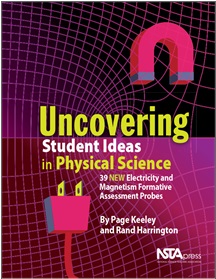 What types of materials can be electrically charged? How does current flow in a circuit? Will a magnet pick up any kind of metal? In answering these types of questions, children will reveal their own preconceptions about ideas that they bring with them into the learning environment. Their teachers need ways to help them identify misunderstandings that may occur during instruction. That’s why probes are an essential component in the science teacher’s toolkit.
What types of materials can be electrically charged? How does current flow in a circuit? Will a magnet pick up any kind of metal? In answering these types of questions, children will reveal their own preconceptions about ideas that they bring with them into the learning environment. Their teachers need ways to help them identify misunderstandings that may occur during instruction. That’s why probes are an essential component in the science teacher’s toolkit.
Page Keeley and Rand Harrington, in their book, 39 NEW Electricity and Magnetism Formative Assessment Probes (Vol. 2 in the Uncovering Student Ideas in Physical Science series), bring K-12 teachers a whole new collection of carefully researched and developed probes around electric or magnetic phenomena or concepts.
Designed to be used as formative, rather than summative assessments, these intellectually engaging probes are designed to “stimulate student thinking and involve students in productive discussions as they grapple with their own ideas and consider the ideas of others.” The feedback gleaned from each question provides non-judgmental, valuable feedback to both educators and students in grades 3-12.
The book organizes 39 probes into three sections: Electric Charge; Electric Current; and Magnets and Electromagnetism—with each section starting off with a concept matrix identifying the main concepts related to the probe and the suggested grade level for each. Related ideas from the 2009 updated version of the Benchmarks for Science Literacy and links to the Next Generation Science Standards are included as well as related NSTA resources, such as books, journal articles, and collections from NSTA’s Learning Center.
Teachers will appreciate that each probe starts off with a question and a series of responses from which students can choose—with the related expectation that students will explain their thinking on the answer they selected (such as what rule or reasoning did they use in making their predication). Each probe is accompanied by teacher background notes—critical components for educators to explore/examine prior to using each probe—that cover the following areas:
- Purpose: What is the idea that the probe intends to uncover/reveal? Does the probe fit your learning target? This section helps you answer these critical questions.
- Related Concepts: Each probe is designed to target one or more concepts (defined as a “one-, two-, or three-word mental construct used to organize the related ideas addressed by the probe and the related national standards).
- Explanation: This section offers a brief scientific explanation and clarification of the scientific content that underlies the probe.
- Administering the Probe: Importance guidance is provided for administering the probe to students and covers areas such as suggested grade levels, ways to demonstrate the probe scenario, and modifications (to adapt to different learners).
- Related Research: Each probe is informed by research.
- Suggestions for Instruction and Assessment: Need a brief suggestion to help you plan or modify your curriculum and instruction so that you can help your students who are struggling with difficult or misunderstood ideas? This section will help you do that.
- Safety: This section provides suggestions created by NSTA’s science safety consultant for practicing safe science in your classroom—a must read!
- References: References are provided for the standards, research summaries and several of the instructional suggestions provided in the teacher notes.
Keeley and Harrington, in their introduction, acknowledge that “we are surrounded daily by the phenomenon produced by electric charge—these charges are what makes things work, including all the electronic devices we own.… Yet most of us have only a vague notion of what electric charge is and even less of an understanding of where these charges come from, where they go and how they move around.”
Happy Uncovering in this easy-to-read (you don’t need to be a science specialist to understand the contents!) resource!
This book is also available as an e-book.
Learn more about other books in the Uncovering Student Ideas series.
Literacy and science: Writing and communicating
By Mary Bigelow
Posted on 2014-06-23
 This is a continuation of a question about Literacy and science: Reading and comprehension. The question dealt with incorporating literacy practices and activities into science instruction and the role of the science teacher in doing so.
This is a continuation of a question about Literacy and science: Reading and comprehension. The question dealt with incorporating literacy practices and activities into science instruction and the role of the science teacher in doing so.
At an inservice event I attended, a museum herpetologist described his work to a group of teachers. His research focused on a longitudinal study of frog populations in the Northeast United States, but he said that a good portion of his day was spent writing—notes, memos, observations, summaries, reports, journal articles, blog entries, and letters.
This type of writing is different from the narrative and creative writing students do in Language Arts (LA) classes. While our LA colleagues teach sentence structure and correct usage applicable to all forms of writing (including technical writing), it’s unrealistic to assume they will also teach students the nuances of scientific writing, especially without the context of science content.
Several Ms. Mentor columns have addressed literacy topics related to writing as communicating in science:
- Writing in science class. We’re having a discussion in our secondary school science department. Some of us think our lessons should incorporate more opportunities for students to learn how to write, while others maintain there’s little time for writing and that’s the job of the English teachers. Who is correct?
- Using essay questions. I want to use more essay-type questions on my unit assessments, but with 150 students I feel swamped trying to grade all of the papers and provide feedback. Any suggestions for making this a good learning process?
- Science notebooks: Archive or learning tool? In my Earth science classes, I require the students to keep notebooks. I give them directions as to what pages to put in the notebook and in what order. I thought this would be an easy grade for the students, but many of the students don’t follow the directions. Short of a failing grade for the notebooks, how can I demonstrate the value of organized notes?
- Students as peer editors. My students are working on research papers about inventions or chemical processes set mostly during the Industrial Revolution. I was wondering if you had any suggestions about peer editing. (See also the follow-up to this blog)
Speaking and listening are often overlooked as literacy practices. (Perhaps because they are harder to assess?) Several Ms. Mentor columns have addressed how these can be enjoyable and authentic ways for students to share what they have learned:
- Class presentations. My principal encourages all teachers to have students do class presentations during the year. I like the idea, but the thought of listening to 150 “oral reports” on a chemistry topic is mind-boggling, not to mention time-consuming. Do you have any suggestions for making this a positive experience for both the presenters and the audience (and the teacher)?
- Discussion and argumentation. After a lab activity I try to engage students in a discussion of their findings. I use a variety of strategies to involve the students, but I find they don’t really know how to have a meaningful discussion without interruptions, off-topic statements, or inappropriate language. Do you have any suggestions?
- Gallery walks. I participated in a “gallery walk” during a session at an NSTA conference. Would this be appropriate for middle school students?
We can’t assume students will come to our classes with all the communication skills they need. We can teach students about writing and presenting, but the best way to develop these skills is to have them write and present—often and in depth–through planned and purposeful activities. Modeling is essential. Show students what effective science communication looks like (using both words and illustrations). Show them examples of ineffective writing or incomplete arguments and ask students to clarify them. Write along with the students and display your work. Demonstrate effective presentation skills and mention your reasons for using them.
At first, you might have students balk at the notion of reading, writing, and presenting in science classes (my students did—”This isn’t English class!”). But don’t give up. It may take a few times before students understand the purpose and see the value of reading, writing, speaking, and listening. Your examples and guidance are important to the success of any new endeavor.
 This is a continuation of a question about Literacy and science: Reading and comprehension. The question dealt with incorporating literacy practices and activities into science instruction and the role of the science teacher in doing so.
This is a continuation of a question about Literacy and science: Reading and comprehension. The question dealt with incorporating literacy practices and activities into science instruction and the role of the science teacher in doing so.
eCYBERMISSION 2014: Standout STEM Students Succeed
By Guest Blogger
Posted on 2014-06-23
 The National Science Teachers Association (NSTA) congratulates the national winners of the 12th annual eCYBERMISSION competition, which NSTA administered for the U.S. Army Educational Outreach Program. The online collaborative learning competition cultivates student interest in science, technology, engineering, and math (STEM) by encouraging sixth through ninth-graders to develop solutions to real-world challenges in their communities. The winning teams (and their supportive families and teachers) have quite a bit to be proud of. More than 4,400 teams entered the eCYBERMISSION competition this year, but only 20 made it to the National Judging & Educational Event finals last week at the National Conference Center in Leesburg, VA.
The National Science Teachers Association (NSTA) congratulates the national winners of the 12th annual eCYBERMISSION competition, which NSTA administered for the U.S. Army Educational Outreach Program. The online collaborative learning competition cultivates student interest in science, technology, engineering, and math (STEM) by encouraging sixth through ninth-graders to develop solutions to real-world challenges in their communities. The winning teams (and their supportive families and teachers) have quite a bit to be proud of. More than 4,400 teams entered the eCYBERMISSION competition this year, but only 20 made it to the National Judging & Educational Event finals last week at the National Conference Center in Leesburg, VA.
Who are these brilliant kids? The 2013-14 national winning teams are:
- 6th Grade: Quake Safe, Gahanna Middle School East, Gahanna, OH
- 7th Grade: Ants Go Marchin’ 2 by 2, Science Rocks U, Whiteface, TX
- 8th Grade: Bro x 4, Wheatland Middle School, Wheatland, WY
- 9th Grade: Crabyotics, Taos Middle/High School, Taos, NM
Each member of the winning team received $5,000 in U.S. E.E. Savings Bonds (matured value), in addition to the $1,000 awarded to them as state winners and $2,000 as regional first-place winners.
The AEOP initiated STEM-in-Action grants this year, up to $5,000 to four national finalist teams whose implementation plans prove that their projects provide the greatest possible impact within their communities. The 2013–14 STEM-in-Action grant winners are:
- Crabyotics, Taos Middle/High School, Taos, NM
- CyberRams, Rocky Run Middle School, Chantilly, VA
- Knightettes of the Twisters, Jenks Middle School, Tulsa, OK
- Ravenclaws, Metea Valley High School, Aurora, IL
In an eCYBERMISSION first, NSTA presented the inaugural People’s Choice Award to The Nighthawks, from Marshall County High School, Benton, KY. The team was chosen by online viewers of the National Showcase which featured presentations by the 20 finalist teams. Viewers voted for their favorite project via Twitter using the hashtag #ecyber14. The team received a set of four iPads from NSTA.
Other awardees included:
- Team Advisor of the Year: Randy Bell, a 34-year science teacher presently teaching 6th, 7th and 8th grade science at Resurrection Christian School in Loveland, Colorado
- Ambassador of the Year: Dee Richardson, education services specialist for the New York City Army Recruiting Battalion
- CyberGuide of the Year: Amy Klopotoski, the Contingency Basing Science & Technology Lead at Natick Soldier Research, Development and Engineering Center
- Virtual Judge of the Year: Philip Samudio, a CES Advance Course Instructor at the Army Management Staff College
While at the NJ&EE, the 71 students of the finalist teams and their Team Advisors met with their Senators and Representatives or their staffs on Capitol Hill, toured national monuments and museums on the Capitol Mall, and participated in the STEM Challenge, in which representatives from the U.S. Army labs engaged students in hands-on activities and interactive demonstrations of the government’s top technologies.
Read the eCYBERMISSION press release to learn more, browse images on the Facebook album, or visit the flickr album with the National Luncheon pictures!
Today’s Guest Blogger is Kate Falk, Senior Manager, Public Relations, National Science Teachers Association
 The National Science Teachers Association (NSTA) congratulates the national winners of the 12th annual eCYBERMISSION competition, which NSTA administered for the U.S. Army Educational Outreach Program.
The National Science Teachers Association (NSTA) congratulates the national winners of the 12th annual eCYBERMISSION competition, which NSTA administered for the U.S. Army Educational Outreach Program.
Joys of summer
By Peggy Ashbrook
Posted on 2014-06-22
Children play year-round but some media for play is more easily used in summer. Some recent play that I’ve observed:
Observing the motion of wood chip mulch as it is shaken back and forth on a spring rider.


Using tools to move water and observe its flow.


Making a tunnel in the sand (damp but not frozen like it often is in winter!).

“Cooking” with leaves and sticks found at the end of a parking lot. One child asked, “Is this a useful plant?” We talked about a definition of weeds and how she wanted to use the plant.
Documenting where the shadow is in the morning, and planning to re-visit the outline in the afternoon.

I hope to have this much fun learning all summer!
Science of Golf: potential and kinetic energy
By Judy Elgin Jensen
Posted on 2014-06-20
 For the first time ever, the women are playing their U.S. Open on the same course as the men. Watch 2010 U.S. Women’s Open champ Paula Creamer in Science of Golf: Potential and Kinetic Energy to see the energy transformations they’ll use to power the ball down the tricky course. Creamer says, “You’re so much in control of what you do…” so even though most women don’t drive the ball as far as the men, look for the competition to be every bit as fierce.
For the first time ever, the women are playing their U.S. Open on the same course as the men. Watch 2010 U.S. Women’s Open champ Paula Creamer in Science of Golf: Potential and Kinetic Energy to see the energy transformations they’ll use to power the ball down the tricky course. Creamer says, “You’re so much in control of what you do…” so even though most women don’t drive the ball as far as the men, look for the competition to be every bit as fierce.
This video is one of ten to further your STEM efforts, brought to you by the partnership of NBC Learn, the United States Golf Association (USGA), Chevron, and NSTA. The NSTA-developed lesson plans for these latest additions all focus on engineering design practices—in this case building a better golf ball or golf club face. If your students don’t have a lot of experience with golf equipment, head over to the nearest garage sale or your local used sporting goods resale shop. Used clubs and balls can be had for very low cost. Or check in with a nearby golf course. People leave behind clubs and balls on the course all the time and they might just have some unclaimed ones to give you.
Find the series—available cost-free—on www.NBCLearn.com. You can also use the links below to access the video or grab the lesson plans (in Word format for easy editing). We look forward to hearing from you about how you expect to use the videos as well as how the lesson plan works out in practice with your students. Once you try it out, please leave comments below each posting!
Video
SOG: Potential and Kinetic Energy features energy transformations and Creamer’s technique, which allows her to get more energy into her swing.
STEM Lesson Plan—Adaptable for Grades 7–12
SOG: Potential and Kinetic Energy guides students in the design of a golf ball covering or club face that optimizes the transfer of energy. It also provides ideas for STEM exploration plus strategies to support students in their own quest for answers as well as a more focused approach that helps all students participate in hands-on inquiry.
Image of Paula Creamer courtesy of Secret in the Dirt.
You can use the following form to e-mail us edited versions of the lesson plans: [contact-form 2 “ChemNow]
 For the first time ever, the women are playing their U.S. Open on the same course as the men. Watch 2010 U.S. Women’s Open champ Paula Creamer in Science of Golf: Potential and Kinetic Energy to see the energy transformations they’ll use to power the ball down the tricky course.
For the first time ever, the women are playing their U.S. Open on the same course as the men. Watch 2010 U.S. Women’s Open champ Paula Creamer in Science of Golf: Potential and Kinetic Energy to see the energy transformations they’ll use to power the ball down the tricky course.
Five Ways to Read Science & Children in 15 Minutes
By Carole Hayward
Posted on 2014-06-19


 Science and Children editor Linda Froschauer recently wrote about how elementary school teachers must “intertwine science disciplines and provide many types of disciplinary core ideas within a single topic of study.” Each issue of Science and Children aims to provide timesaving resources that alleviate stress, connect to national standards, and enhance overall student learning. Here are five accessible ways to glean the most important information from your journal subscription in just 15 minutes.
Science and Children editor Linda Froschauer recently wrote about how elementary school teachers must “intertwine science disciplines and provide many types of disciplinary core ideas within a single topic of study.” Each issue of Science and Children aims to provide timesaving resources that alleviate stress, connect to national standards, and enhance overall student learning. Here are five accessible ways to glean the most important information from your journal subscription in just 15 minutes.
- Go digital.
Get your digital edition so you flip through the issue from anywhere: the car wash line, the salon, or even in front of a campfire. (You never know when science inspiration will strike!) But you can also stay in touch with the journal on social media by following Facebook and through the NSTA Twitter feed. Get the latest updates to share with other educators and save for later.
- Boost basic knowledge with Science 101.
Elementary educators are expected to have foundational knowledge in many subjects, but all teachers need a refresher from time to time. Use this column to boost your science knowledge on topics as diverse as friction, sound, and chemistry from Bill Robertson, the author of NSTA Press® best-selling series Stop Faking It! Finally Understanding Science So You Can Teach It.
- Peek into a primary classroom with The Early Years column.
In addition to regular features geared for educators working with students in the PreK to 2 grades, the journal dedicates a column to different aspects of early education. Tackle the challenges of this grade band and get accessible expert advice. If you have more time, explore more on The Early Years blog!
- Inform your budget while connecting to national standards.
Before you spend your money on science-related books, DVDs, and other materials, vet your selections with Science and Children’s columns on best bets for student learning, including resources aligned with Next Generation Science Standards (NGSS) and Common Core standards:
- Teaching with Trade Books
Each month, this column selects specific children’s literature based on the journal’s theme while also presenting engaging activities tailored to K-2 grade levels and the 3-5 grade levels. Use this section to find resources and develop curriculum aligned to Common Core standards and NGSS.
- Early Childhood Resource Review
Appearing three times a year, this column provides an enriched evaluation of new resources for PreK and primary classrooms. Make sure not to miss these well-researched reviews of resources in the elementary science educator field.
- NSTA Recommends
Each month include a fresh crop of recommendations on a wide-range of materials, but the online database has more than 4,000 reviews.
- Dive into teacher-to-teacher classroom stories—and submit one of your own.
Every issue of Science and Children features real-life glimpses of classrooms from around the country. Interested in successful science lessons written by science educators? Enjoy proven classroom experiences through the eyes of educational professionals who create an overview of a specific science investigation from introduction to engagement through assessment.
Take it one step further by submitting your own article. Science and Children is always looking for papers from members. Do you have a success story to share or a science investigation you think science teachers across that nation should know about? Read the guidelines and write for Science and Children!
More time?
Each issue of Science and Children provides resources tailored for NGSS and Common Core standards. Exploring the science of sound, Earth and space sciences, and science literacy are just a few of the topics. Before you start planning, search the archives for topics tailored to your field of study or a particular standard.
Learn more about Science and Children on the NSTA website.
Not a member of NSTA? Learn more about how to join.
Laura Berry of Cogberry Creative is our guest blogger for this series. Laura is a communications professional for the education community.
Science of Golf: agronomy
By Judy Elgin Jensen
Posted on 2014-06-18
 Pinehurst No.2, the site of the 2014 U.S. Open, was not the lush, green, wall-to-wall carpet that most people expect to see at one of golf’s majors. This year’s U.S. Open featured green only near the center of the fairways with browning turfgrass and scraggly “native areas” on their flanks. But all of that was by design. Three years ago the restoration of Pinehurst No. 2 began with yanking out 35 acres of Bermuda rough and replacing it with sandy scrub and native plants such as goldenrod, prickly pear, winged sumac, and wiregrass. Sprinkler heads along the perimeter were pulled as well, leaving the native grasses to the whim of weather.
Pinehurst No.2, the site of the 2014 U.S. Open, was not the lush, green, wall-to-wall carpet that most people expect to see at one of golf’s majors. This year’s U.S. Open featured green only near the center of the fairways with browning turfgrass and scraggly “native areas” on their flanks. But all of that was by design. Three years ago the restoration of Pinehurst No. 2 began with yanking out 35 acres of Bermuda rough and replacing it with sandy scrub and native plants such as goldenrod, prickly pear, winged sumac, and wiregrass. Sprinkler heads along the perimeter were pulled as well, leaving the native grasses to the whim of weather.
Why? You’ll find part of the answer in Science of Golf: Golf Course Agronomy. This installment explores the turf under the turfgrass and how golf courses of the future will likely look more like Pinehurst No. 2 and less like that wall-to-wall green. Ongoing research and environmental stewardship are key segments of the USGA’s Environmental Commitment. Use the connected NSTA-developed lesson plans below to bring engineering design process into your life science class—a still-rare opportunity.
Like last year, the ten videos added to the Science of Golf series are produced by NBC Learn in partnership with the United States Golf Association (USGA) and Chevron. The videos are linked below and available cost-free on www.NBCLearn.com.
Video
SOG: Golf course Agronomy discusses water usage, plant and soil structure, and conservation related to maintaining turfgrass on golf courses.
STEM Lesson Plan—Adaptable for Grades 7–12
SOG: Water Conservation describes how students might design a solution to golf course recovery or water retention. It also provides ideas for STEM exploration plus strategies to support students in their own quest for answers as well as a more focused approach that helps all students participate in hands-on inquiry.
Image of Luke Guthrie on Pinehurst No. 2, courtesy of Zach Frailey.
You can use the following form to e-mail us edited versions of the lesson plans: [contact-form 2 “ChemNow]
 Pinehurst No.2, the site of the 2014 U.S. Open, was not the lush, green, wall-to-wall carpet that most people expect to see at one of golf’s majors. This year’s U.S. Open featured green only near the center of the fairways with browning turfgrass and scraggly “native areas” on their flanks. But all of that was by design. Three years ago the restoration of Pinehurst No.
Pinehurst No.2, the site of the 2014 U.S. Open, was not the lush, green, wall-to-wall carpet that most people expect to see at one of golf’s majors. This year’s U.S. Open featured green only near the center of the fairways with browning turfgrass and scraggly “native areas” on their flanks. But all of that was by design. Three years ago the restoration of Pinehurst No.




